I’ve finally finished my lab course last week - thanks to my supervisor Matthäus G. Chajdas - you can read his blog here -, it wasn’t your usual lab course with work sheets and boring homework, instead I’ve been allowed to implement a nice paper about a Global Illumination approximation algorithm called (Cascaded) Light Propagation Volumes. It’s been developed by Crytek and you can find more information (including some presentations and videos) on their server. (Note: this is an implementation of the I3D paper, not the earlier SIGGRAPH one.)
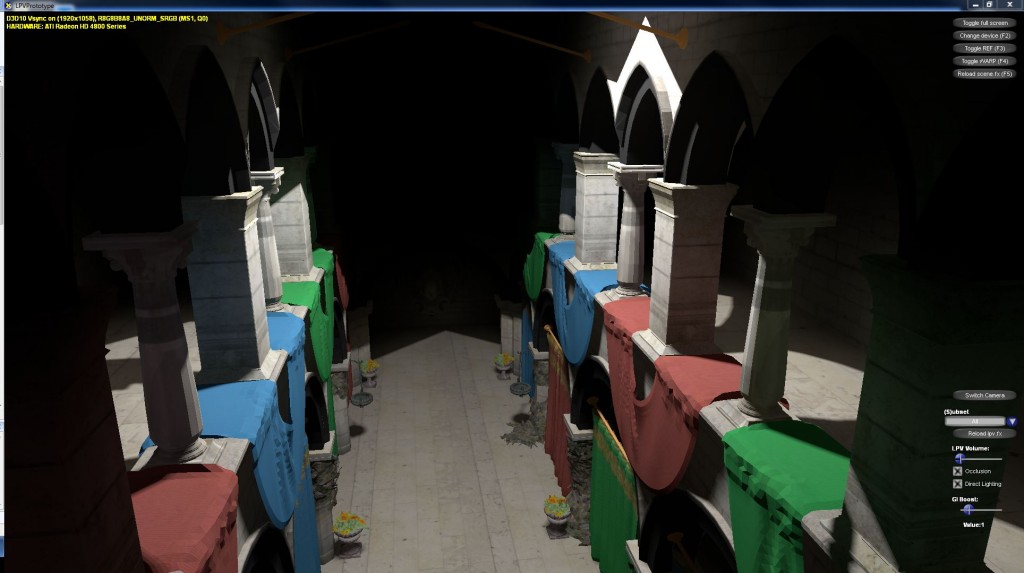
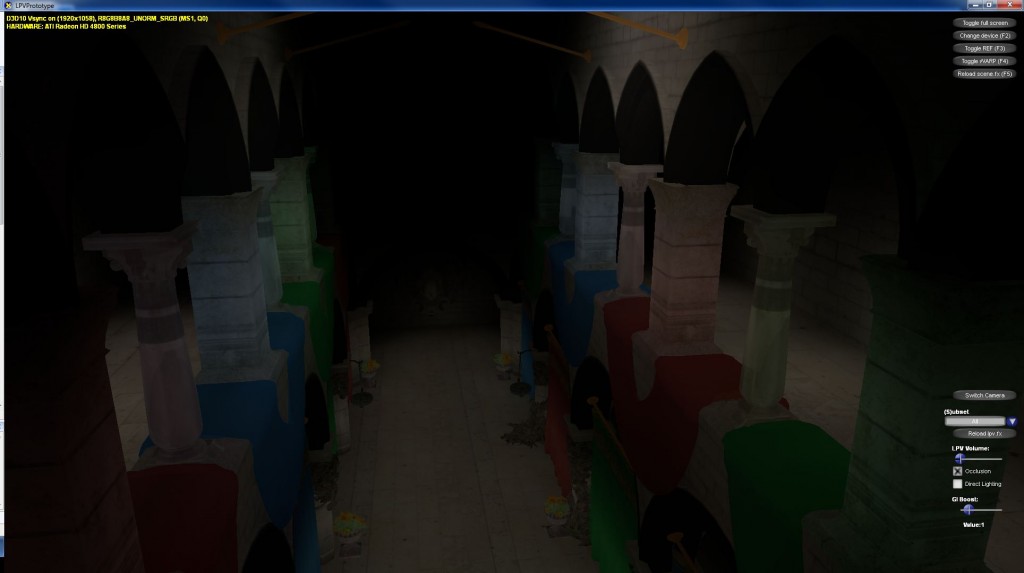
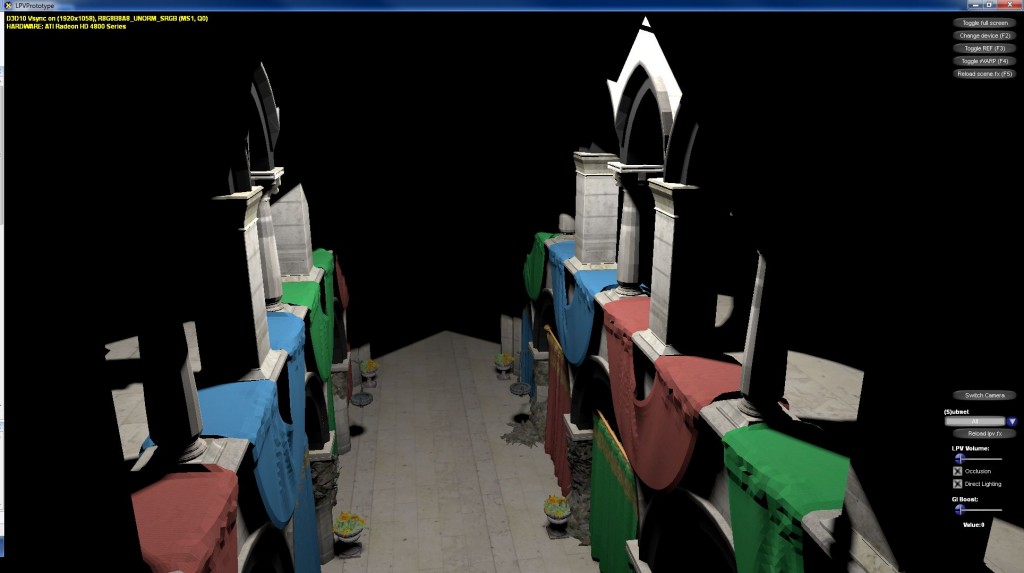
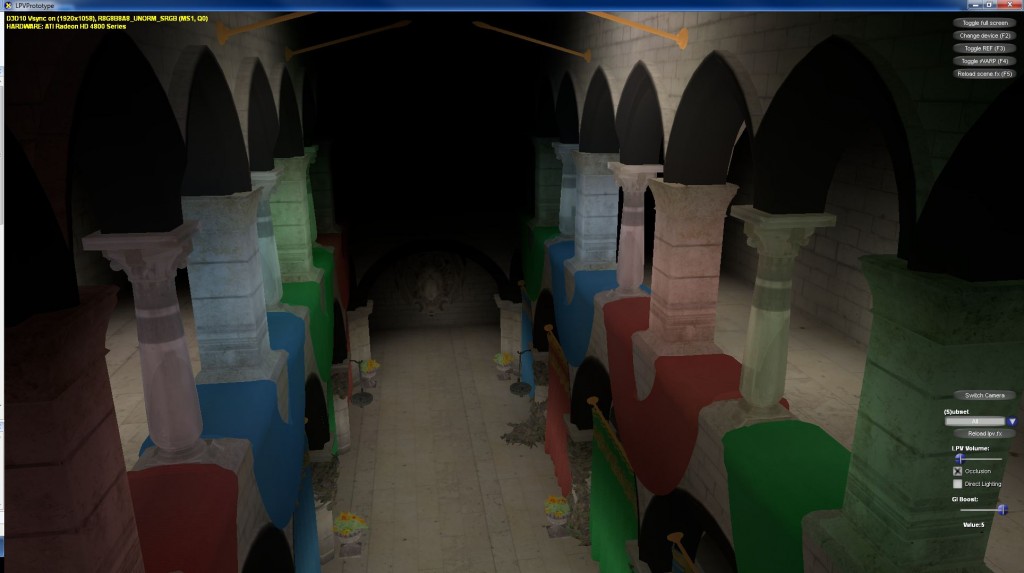
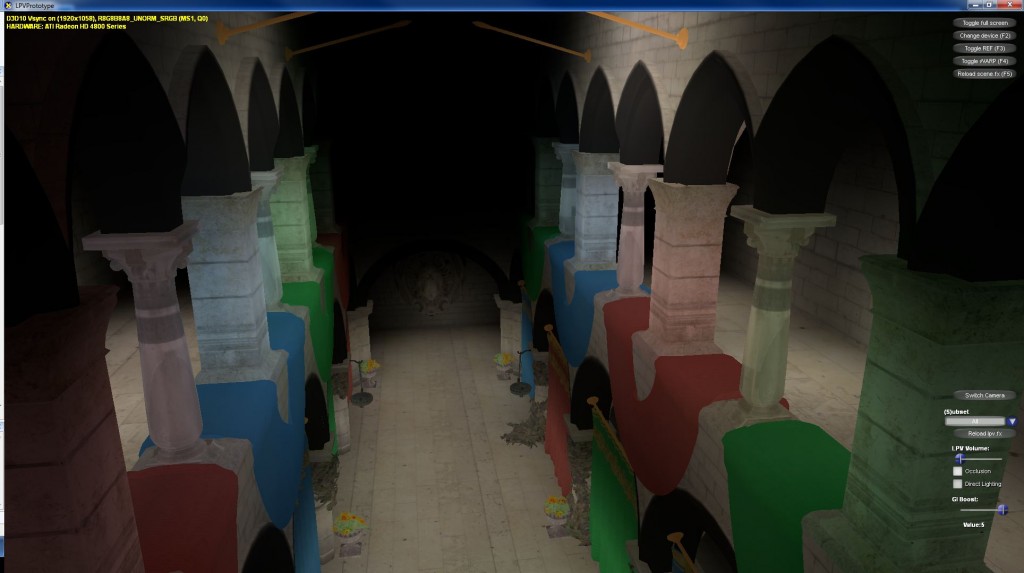
The algorithm approximates global illumination by rendering the light into a reflective shadow map, injecting it into a volume (using a spherical harmonics representation) and propagates the light flux in this volume (hence the name of the algorithm) and taking into account occlusion as possible extension.
The whole algorithm is physically motivated but corners everywhere, of course, to be more efficient. The paper also contains a few errors and doesn’t explain everything needed to implement it in great detail (like eg the solid angles of the side faces), so I’ve written two documents detailing the mistakes I’ve found and the additional calculations I’ve performed.
You can find the mistakes here (including suggested corrections) and the full annotations document here.
Finally I’ve also uploaded the whole prototype (including my code licensed under the FreeBSD license and the media files) here - it’s 68 MB big (and it’s been compressed with 7zip with a compression mode that might not be supported by WinZIP. The Sponza model is from Crytek, too. You can download the original model and textures here. The project uses DirectX 10.1 and by default it won’t run in DirectX 10, because it uses a texture format that is deprecated in D3D10 but supported again 10.1 (BGRA). See the comment by FatGarfield for the location that needs to be changed for it work in DX10, too. (However red and blue will be swapped then.)
Update: I’ve updated the project to support Visual Studio 2012. You can find the full download here (68 MB).
I haven’t implemented cascaded LPVs and I also use only one light/RSM and only inject its depth into the occlusion volume, but the results already look very nice in my opinion.
Stay tuned for more :-)
Cheers,
Andreas